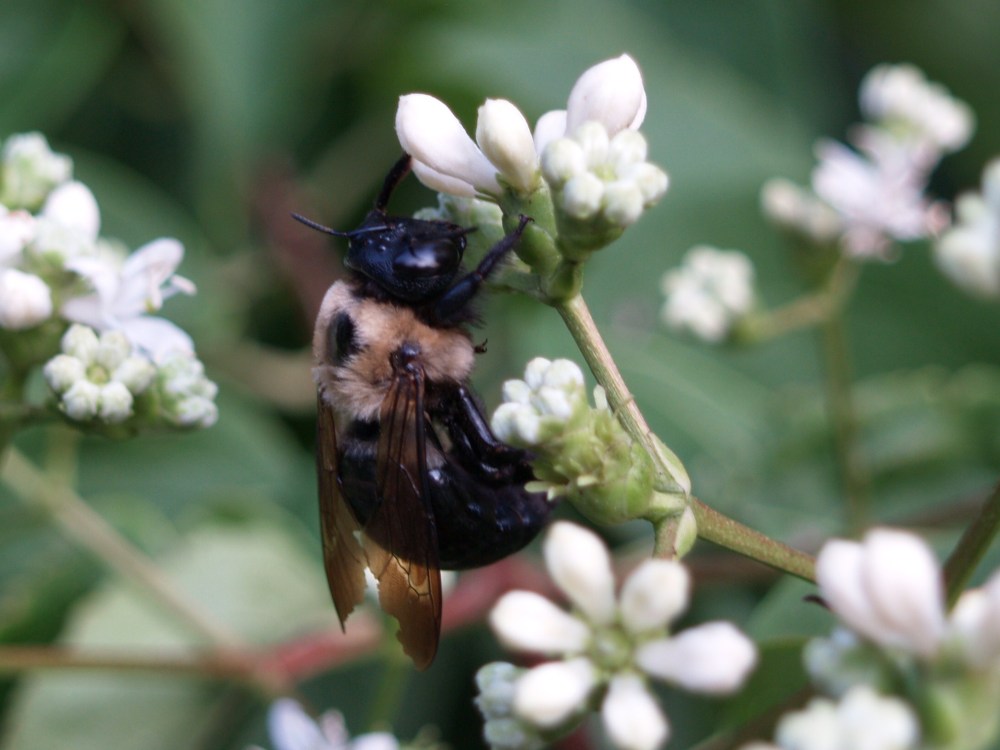While roaming through the garden this morning I was surprised to see dozens of lifeless bumblebees clustered on blooms atop the tall stalks of Tatarian daisy (Aster tataricus ‘Jindai’). In the years that I have been photographing the garden I’ve developed an affinity for these gentle beings, and so I was saddened that their cycle of life has ended quite unceremoniously perched on the beautiful flowers of this aster.
I wonder what draws the bumblebees to the aster as their final resting place. It has just passed its peak bloom earlier in October, and only a few days ago was alive with bees and butterflies foraging for its nectar. Perhaps the alarm on their biological clock struck midnight while they were feeding, for males do not survive the winter, and apparently the end comes quickly.
While I have noticed diminished numbers of honeybees over the years, the population of bumblebees has exploded in the garden. Beginning mid-summer there are abundant numbers collecting nectar from the flowers of Franklin Tree, caryopteris, and the Seven Son Tree. In late summer they visit the unique blooms of toad lilies, to crawl under the pollen laden anthers to reach the nectar below. On trumpet shaped flowers, too long and narrow for the large bees, I have seen them bite through the base of the bloom to access the nectar.
Many times I have drawn near as bumblebees swarm about, buzzing from flower to flower, and though they are clearly aware of my presence, they are not agitated, only inconvenienced as they detour to another bloom.
Soon, the blooms of the asters will fade, the stalks will wither and fall, and the cycle of life will circle to its starting point. The life of the male bumblebee has ended, but the queen lives on to begin a new colony in the spring.